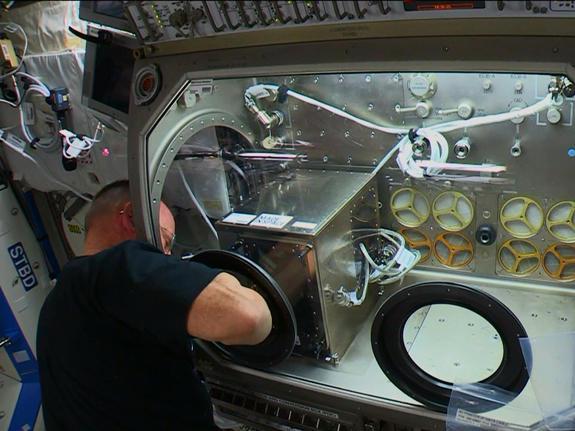November 18, 2014
Washington: The world's first zero-gravity 3D printer has been installed by NASA on the International Space Station (ISS), which will help astronauts to experiment with additive manufacturing in microgravity.

November 18, 2014
Washington: The world's first zero-gravity 3D printer has been installed by NASA on the International Space Station (ISS), which will help astronauts to experiment with additive manufacturing in microgravity.

Commander Barry WIlmore works on Monday to install a 3D printer inside the Destiny laboratory’s Microgravity Science Glovebox.
NASA astronaut Barry Wilmore installed the 3D printer, designed and built by Made In Space for NASA, inside the Microgravity Science Glovebox (MSG) aboard the ISS.
The printer was launched in September aboard the SpaceX 4 resupply mission to the ISS.
With the aid of the Made In Space and NASA ground support teams, Wilmore was able to power on and complete critical system checks to ensure that the hardware and software was in operating condition.
"This is a very exciting day for me and the rest of the team. We had to conquer many technical challenges to get the 3D printer to this stage," said Mike Snyder, lead engineer for California-based startup Made in Space, in a statement.
The goal of the 3D Printing in Zero-G technology demonstration is an experiment to explore the use of additive manufacturing technology as a reliable platform for sustained in-space manufacturing.
The first phase of printing will include, among other things, a series of engineering test coupons which will be returned to Earth for analysis and compared to control samples which were made with the same 3D printer while it was at NASA's Marshall Space Flight Centre in Huntsville, Alabama prior to launch.
"This experiment has been an advantageous first stepping stone to the future ability to manufacture a large portion of materials and equipment in space that has been traditionally launched from Earth surface, which will completely change our methods of exploration," said Snyder.
The science collected from this printer will directly feed into the commercial printer flying up in 2015, which will enable a fast and cost-effective way for people to get hardware to space.
Courtesy: PTI







































































































